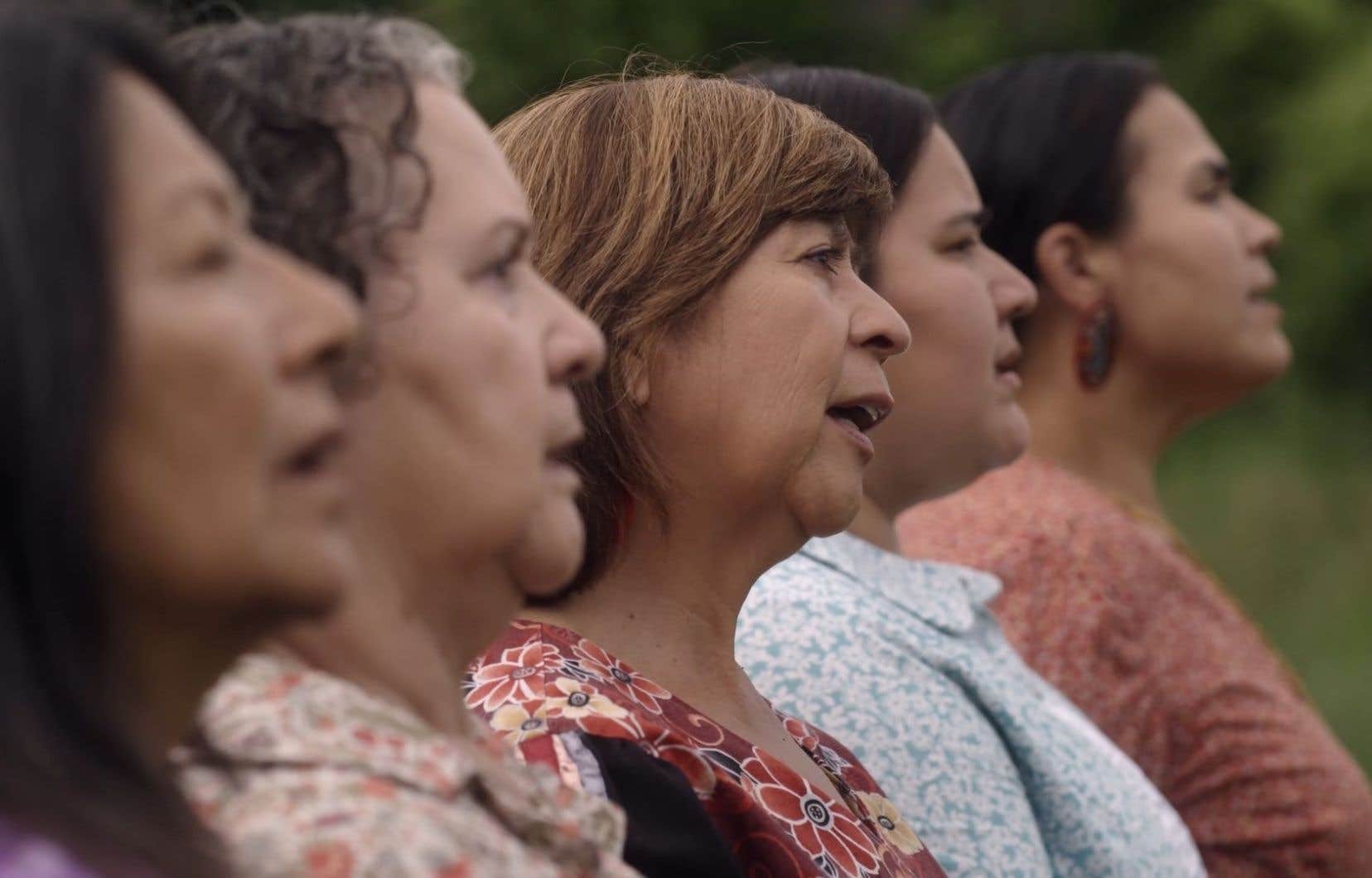The magnificent Plains native chief’s headdress, all adorned with feathers, is a well-known object. But it has generally been seen on other heads, those of Cher or Gwen Stefani, Pharrell Williams or Karlie Kloss, than on that of a leader who wears it for its sacred powers. In fact, the problems of cultural appropriation noted by Aboriginal people are mainly linked to a complete ignorance of the meaning of the symbols conveyed in popular imagery. This is what Neil Diamond and Catherine Bainbridge explore in their documentary Rougemania.
Cree filmmaker Neil Diamond, whom the film follows, explains that, throughout the world, he sees a fascination with the indigenous world. However, when it presents itself as a cry, its interlocutors are often disappointed. “I didn’t live up to their expectations,” he says with a touch of irony. Whether in the world of fashion, in Hollywood or even on sports teams, indigenous symbols are dissociated from their history.
Right off the bat, he buys an old beaver hat in a store. The saleswoman is amazed when he tells her that this beaver could well have been hunted by her grandfather. It was near his community of Waskaganish that the Hudson’s Bay Company’s first trading post was established.
In the 1970s and 1980s, American fashion designers competed to add indigenous embellishments to their creations, such as leather fringe or Navajo-inspired designs. “If I show up in the reserve dressed like that, I’m going to get beaten by my grandmother,” jokes the director. Neil Diamond’s quest starts more specifically from a shaman’s cloak decorated with signs with mysterious meaning, reproduced by the fashion designer Isaac Mizrahi, who had seen the photo of it in a book. She leads the filmmaker to Iqaluit, to the descendant of the true shaman who wore the original mantle. “Maybe the descendants of this shaman know what the symbols on the parka mean,” he said. In fact, the original parka belonged to the shaman Ava, who Inuit filmmaker Zacharias Kunuk made the main character in his film The diary of Knud Rasmussen. It had been sewn by his wife, and the symbols were intended to gain protection from spirits.
To explain the use of indigenous names and symbols that a large number of sports teams have adopted, Neil Diamond goes back to the story of Jim Thorpe, this football champion from the Sauk and Fox reservation, in Oklahoma. After winning gold in the pentathlon and decathlon at the 1912 Olympic Games in Stockholm, Sweden, Thorpe was stripped of his medals on the grounds that he had played baseball semi-professionally before competing in the Games. His medals were symbolically returned to him in 1983, 30 years after his death.
On the political level, Neil Diamond establishes a tenuous link between the mode of operation of the Iroquois Confederacy and that of the American government, and its influence on the democratic model. One more way to prove that indigenous influence is alive and well in America.
